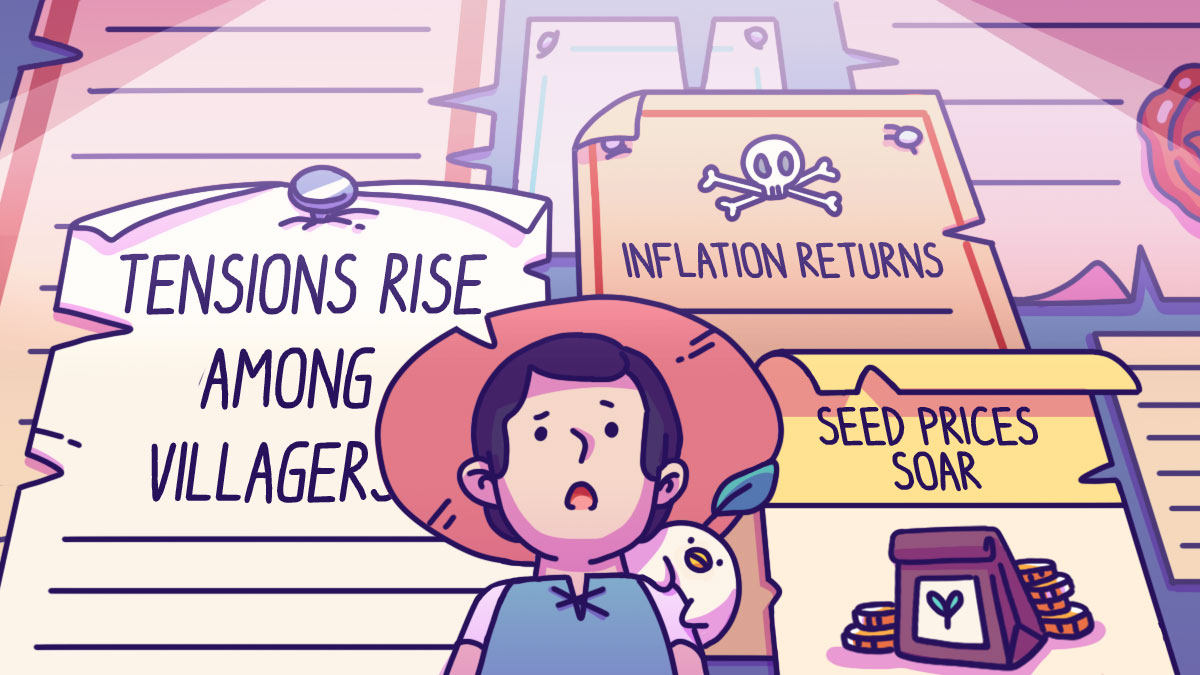
Module 2

Geopolitical Events and Its Impact on Investments and Market Volatility
Conflict disrupts, but adaptability matters
When conflict broke out between the neighbouring villages, one direct consequence was the destruction of a seed warehouse. Exports of affordable seeds grounded to a halt. Prices tripled. With planting season fast approaching, Jack had to think fast. He began sourcing leftover seeds from nearby towns, bartering with fellow farmers, and even testing older, hardier seed varieties he had stored away, hoping that anything might help him stay afloat during the crisis.
Jack’s situation isn’t far from what happens across the global economy in the real world. When nations clash – whether through war, trade disputes, or economic sanctions – markets respond swiftly. Supply chains are disrupted, tariffs surge, and businesses are forced to reassess risks. In recent years, tensions between key resource producers and large consumer nations have led to developments like export restrictions, high logistics costs, and shortages of crucial commodities like energy, fertiliser, and semiconductors. As a result, the price of raw materials soared and global investors shifted from pursuing growth to protecting their capital.
Even seemingly distant geopolitical tensions can trigger a domino effect that reaches the smallest farm. For Jack, stability wasn't just about a successful harvest, but about the ability to adapt and protect his portfolio. Like real-world global investors, he learned that surviving uncertainty isn’t about waiting out the storm.
One policy change can ripple worldwide
A single policy decision in a faraway land can even reach Jack’s modest field. Imagine, for example, the central bank of a developed and major trading nation decides to raise interest rates to tame domestic inflation, but the ripple effects stretched globally. Investors shifted capital back to this nation in search of higher returns. But the emerging markets felt the squeeze: weaker currencies, pricier imports, and costlier loans.
Jack may not have known what a rate hike meant, but he certainly noticed when his supplier raised their prices, blaming it on higher import costs. This caused Jack to rethink his farm expansion and delay his purchase of premium fertiliser, settling for what he could afford instead.
Luckily, his village chief responded quickly by lowering taxes and offering incentives to attract foreign seed companies to set up factories in the village. Soon, new seed outlets opened, agricultural technicians arrived, and the farming community began to recover.
New technologies are transforming entire industries
In our world today, artificial intelligence and automation are no longer futuristic concepts; they’re actively reshaping global industries. From finance using algorithms to predict risk, to factories deploying robotics for better efficiency, those who embrace technology are advancing faster.
Global investment in AI has surged, with countries racing to become leaders in innovation. Companies that adapt to change often enjoy higher productivity, greater market confidence and stronger valuations. Conversely, those that are slow to adapt risk falling behind, or worse, being left behind entirely.
Let’s see how this plays out in Jack’s story. When the seed company set up operations in Jack’s village, it introduced new technologies like automated tools for planting, smart irrigation systems, and crop monitoring software. Jack soon saw the results: higher yields, lighter workloads, and a clearer path forward. Not because technology changed who he was, but because it strengthened what he already did well.
One truth stands out: technology is just one of many transformative forces reshaping how industries operate, redefining risk and opportunity. From trading floors to farming fields, the ability to adapt to these structural shifts is what builds lasting resilience.
Take Singapore, for instance. The rise of food delivery apps and digital payment systems has reshaped how small businesses operate, from hawker stalls adopting QR code payments to retailers shifting their presence online. Accelerated by the pandemic, these changes highlight how even the most traditional sectors must evolve to stay relevant.